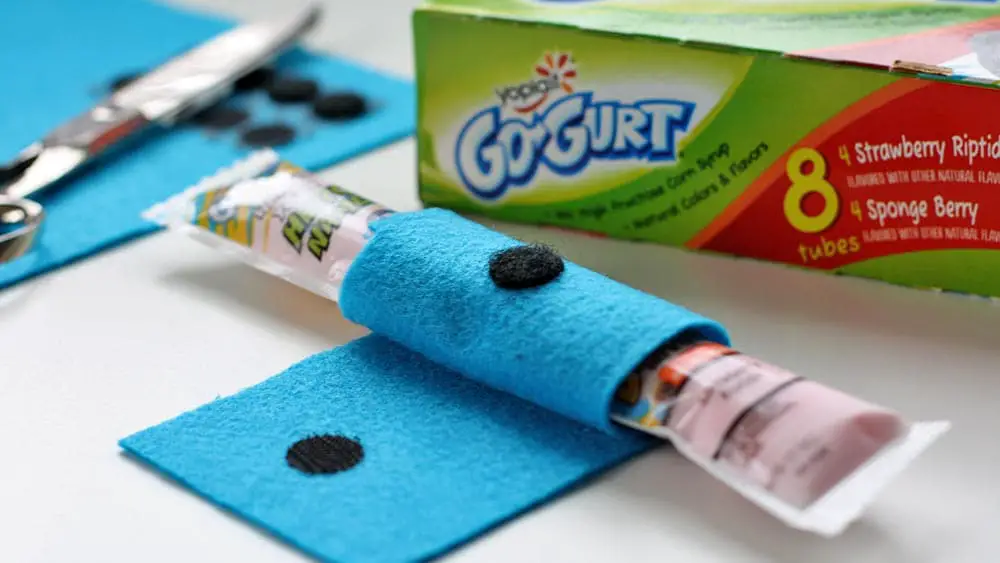How Long Can Lunch Meat Sit Out?

How long can lunch meat sit out? This is a question that most people often ask in different cuisine forums. It isn’t surprising since most of us prefer to make a sandwich from deli meat for simple quick lunches. The wide selection of meats offered at the deli offers a great deal of choice for your everyday lunch box.
However, for some reason, if you have left your lunch meat sitting on the countertop for a while, you would want to make sure whether it’s suitable for consumption. This is an important question because it might lead to health hazards if you eat bad meat. Right? So, read on to more about this topic.
In general, it is not recommended to consume deli or smoked meats that have been left out in the open air for more than 2 hours. Instead, it is recommended to store fresh and packaged meats for lunch in the refrigerator until you’re ready to consume them.
Fresh and unopened lunches that are pre-packaged or fresh meats that are sold-by or expiration date can keep for 2 weeks when stored in the refrigerator and open packages can last for about one week after the opening.
Dry-cured lunch meats such as pepperoni and salami can be left at room temperature for up to six weeks unopened and can last up to 3 weeks inside the refrigerator.
Keep Lunch Meat at Room Temperature
The USDA suggests that you should never leave lunch meat at temperatures for more than 2 hours. If left in the room for longer than two hours, lunch meat, as well as other perishables, could create harmful bacteria that can cause food-borne illness.
Room Temperature is the Danger Zone
The growth of food-borne bacteria occurs when food is placed within the “Danger Zone,” which the USDA defines as being between 40 degrees and 140 degrees Fahrenheit.
Since room temperatures are within this range and it’s important to keep refrigerated anything perishable that isn’t planned to serve or eaten in the next couple of hours.
There is a Danger Zone timeframe that shrinks when food items are stored in temperatures of 90 degrees or more. If the air conditioner is not working or food is sitting out on a table in the hot weather throw it away after an hour to avoid food-borne illness.
What Happens To Lunch Meat Left Out Overnight?
As a rule of thumb, it is not recommended to eat the majority of deli meats you have stored overnight. It is recommended to adhere to the two-hour rule. Discard any deli meat that has been left out for longer than two hours. There are some exceptions to the rule when it comes to preserved meats from delis.
What About Cured Deli Meat Left Out Overnight?
Cured deli meats can be classified to be “Shelf-Stable.” The meats that are shelf-stable can be stored at room temperature for up to months at times. But, whether cured meats in delis are shelf-stable prior to or after opening is dependent on.
Check your manufacturer’s “Safe Handling Guidelines” to determine whether your meats that have been cured can be kept at room temperature or if they require refrigerating. USDA law requires that producers must offer Safe Handling Instructions which include storage guidelines on the food item.
If you’re not sure whether the meat is safe cold at room temperature keep it in the refrigerator and adhere to the two-hour rule in the event that it’s not left at room temperature.
How Long Does Deli Meat Sandwich Last In The Fridge?
Deli sandwiches made of meat are staples for many of the lunch bags. However, they add many variables in keep the sandwiches in a room temperature, due because of the inclusion of other ingredients like mayo and cheese.
The general guideline is to throw away any meat, dairy, or egg-based products that have been sitting for longer than two hours the room temperature.
Different Types Of Deli Meats–Preservation and Shelf-Life
Deli meat preservation methods are available in many types, and each has its own shelf-life.
Dry-Cured Deli Meats
Dry-cured Deli meats have been around for many thousands of years. You’ll be able to recognize a lot of them such as hard salami and pepperoni, due to their popularity on charcuterie platters and sandwiches. Many types of meat that are dry-cured are shelf-stable.
Some can remain at room temperature all night without putting the consumer at risk since dry-cured meats contain salt or a drying, acidic ingredient that is used to dry the meat. These ingredients create inhospitable conditions for bacteria to flourish.
The majority of producers will suggest that meats dry-cured stay in the fridge until you have opened the packaging to avoid moisture build-up and exposure to bacteria.
Pre-packaged Deli Meats
In the meat section, you’ll see packaged deli meats that are simple-to-grab boxes of turkey, ham, etc. The meats are usually flavored with salt, sugar, or smoke from the process.
Furthermore, deli meats packaged in pre-packaged packages generally contain preservatives that keep the meat safe for consumption. Pre-packaged deli meats typically are good for about a week when stored when stored in the refrigerator however they shouldn’t be kept at room temperature for longer than a couple of hours.
Fresh Deli Meats
Fresh deli meat is available directly from the counter of the deli at the grocery store. The butcher will cut and chop the meat for you prior to packaging it.
Deli counter meats tend to be free of preservatives than packaged meats. This means that they won’t last for as long in the fridge. Be sure to eat freshly prepared deli products within 6 days after purchase. Also, don’t leave them at room temperature for longer than 2 hours.
The most popular types of Deli Meats
While browsing through the department of delis in the grocery department, you’ll see a variety of different kinds of meat to choose from to make your next charcuterie platter or sandwich from a deli. Some of the most well-known kinds of deli meat include:
Turkey
Typically, turkey meat is smoke-smoked using woods such as applewood and hickory or is flavoring it with honey. It is possible to purchase turkey fresh or pre-packaged from the counter of a deli.
Ham
Hams that are flavor-infused come with maple, honey, or wood-smoked. It is common to find ham packed in a pre-packaged form or delivered fresh from the deli. However certain variations such as salt pork can be dry-cured.
Salami
A well-known Italian salami is a popular deli meat choice You can purchase salami packaged fresh, in the deli, or dried-cured sausage. Typically, fresh and dry-cured salami is of higher nutritional value than the pre-packaged versions.
Chorizo
It’s a spiced Spanish sausage that is one of the most popular among those who cook Hispanic cooking. It is typically packaged or at the counter of the deli.
Pepperoni
Another deli meat that is versatile pepperoni is available in fresh, pre-packaged as well as dry-cured versions that are similar to salami. It is common to discover all three types at the supermarket.
Coppa
It is a more costly Italian meat deli Butchers marinate Coppa in red wine and spices before cutting the meat. Coppa is air-dried and salt-cured so you’ll be able to find it in the form of a sausage roll, or behind the counter of deli.
Roast Beef
A favorite for sandwiches, you will typically find roast beef in prepared or fresh from the deli choice. Roast beef is not typically dry-cured.
Chicken
Generally, chicken is processed in small layers of meat or “carving board” type You can usually buy fresh chicken from the butcher, or pre-packaged. Deli chicken usually has smokey flavors.
Identifying the Dangerous Lunch Meats
If you’re concerned that the meat from the deli has sat for too long at the shelf, you can look for many indications that will verify your suspicions. It’s not recommended to “test” suspicious meats in delis by eating them. In fact, one bite of rotten meat could cause food poisoning and other infections caused by bacteria. If you’re extremely concerned about the safety of deli meats remove the meat to keep security.
Temperature
Deli meat that’s been sitting in the fridge for too long can turn warm or even lukewarm to feel. If deli meat doesn’t feel cold to the touch, it means that it’s become sufficiently warm to encourage the growth of bacterial.
Texture
If the deli meat is thin, rubbery, or breaks easily You must get rid of it. The reason this happens is because the texture gets worse as bacteria grow and the deli meat is exposed to temperatures at room temperature.
Smell
Your senses are a great indicator of quality. Bacteria can emit an unpleasant smell as they grow in the deli, so if you notice that the meat is sour or smells otherwise, do not take it in.
Coloring
If the meat from the deli has changed color and has developed new colors or has faded to the color of a green or whitish is not recommended to eat. Color changes could indicate the growth of mold or bacteria within the food.
Learning More About Sell-By, Use-By/Best-By, Date of Expiry
If your deli meat does not show the typical signs of rotting or expiration Check the date listed on the package. It is important to note that manufacturers aren’t required to include the expiration dates on their deli meats. Typically, they use the Best-By or Use-By dates to notify the purchaser about the shelf-life estimate for the item.
Sell-By Dates
Sell-By dates are dates that stores use to determine when they need to either sell or remove it from their sale floor. If you buy items that are past the sell-by deadline, USDA states that you must consume these items within the next couple of days.
Use-By-Date or Best-By-Date
Use-By or Best-By date dates offer an accurate picture of the time when deli meats cease to be tasty and are more likely to spoil. Although these dates do not constitute expiration dates, they provide information on when the meat is likely to begin to lose its texture, flavor and nutritional value.
You should either freeze or eat the deli meat before the date of use to get the best from the meat.
It is not necessary to throw away meat from the deli beyond the expiration date. Instead, look for signs the meat is rotten. If the packaging is not opened it is safe to keep it in the refrigerator for up to 2 weeks prior to eating it.
However, if you’ve opened the box it is recommended to eat the deli meat within one period of one week regardless of Best-By or Use-By date.
Dates of Expiration
If the meat in your deli is a real expiration date Do not attempt to keep the meat in the fridge beyond that date. If the package has been unopened or stored in the refrigerator to be thrown away, it’s best to throw it out when the expiration date has passed. If you have frozen deli meat with expired dates it is best to defrost the meat inside the refrigerator before eating it within the next couple of days.
What Happens When You Eat Poor Lunch Meat
Consuming bad or rotten lunch meat could cause food poisoning, a condition that causes diarrhea, stomach upset, and nausea. Furthermore, pregnant women who consume the deli meat that is rotten can contract an infection with listeria, which could affect them and their babies.
Storing Lunch Meat
Always make sure to read the manufacturer’s safety handling guidelines for the deli meat. Certain types of salami, such as hard salami, may suggest keeping the meat at room temperature in a dry, cool location until it is it is opened. Others may suggest the use of refrigeration.
Opened Vs Unopened
Deli meat packages that have not been opened remain in their original packaging with any issue. However, the USDA recommends that packaged lunch meat should be stored in the refrigerator not more than two weeks prior to opening.
The deli meat packages that are opened generally require storage in the refrigerator. Sometimes, they can be stored in the original packaging if the packaging seals.
If not, then place the meat from the deli in a zip-lock container or Tupperware to shield the meat from cross-contamination and bacteria. The USDA suggests keeping the meat in deli packages that are open for a maximum of 3 to 5 days inside the refrigerator before throwing them away.
Freezing Lunch Meat
Incredibly, you can store deli meat in freezers! However, it is recommended that the FDA advises against keeping the meat frozen for longer than 2 months prior to defrosting and eating the meat.
When the meat has been taken a break, do not freeze it again. Also, it is recommended to consume the meat that has been thawed within 3 to 5 days.
Tips for Freezing Lunch Meat
Avoid the risk of freezer burn by wrapping the lunch meat in a freezer-safe wrap, or place the food in a freezer-safe bag.
Do not store freezer meat in the original plastic container if it’s not freezer-safe. Instead, wrap it in freezer-safe Tupperware or saran wrap aluminum foil.
Don’t freeze the deli meat longer than two weeks.
Tips for How to Defrost Lunch Meat
Defrost the deli meat in the refrigerator to increase the shelf life. It is more efficient to defrost the deli meat with cold water or in with the microwave. The microwave could cause the introduction of bacteria to meat.
If you have defrosted Deli meat by soaking it in cold water or in the microwave, eat it the next day.
How To Up Lunch Meat Sandwiches
It’s completely safe to heat up sandwiches of deli meat before eating them. For women who are pregnant cooking, deli meat sandwiches can allow them to eat food items from the deli while pregnant.
Make sure that the meat is cooked to 165 degrees Fahrenheit and is steaming hot prior to eating it in case you are expecting.
If you’d like to prevent a soggy sandwich, think about warming the lunch meat in the microwave, or using the toaster oven to warm to toast your sandwich equally. Be aware that when warming an item that was hot before and steamed, the texture might alter.
Furthermore, the liquids in any dairy products, meats or sauces could get into the bread, causing it to get soggy.
Tips to Pack Lunch Meat When On The Move
If you are taking your sandwiches from the deli, charcuterie boards, or other snacks to work or on vacations it is important to make sure you’ve packed them properly. The simple act of putting the deli meat in a lunch bag will not keep it food-safe.
Place the meat and deli products in an insulated lunchbox.
Place an ice pack in or near the deli meat inside your lunch box that has been insulated.
Consume the meat from the deli within four hours of the time before the ice pack starts to melt.
If you’re at your workplace, keep the deli meat in your refrigerator, either on its own or in the lunchbox.
If the meat in your deli has become warm, the ice pack is completely gone, or your lunchbox sat outside in sunlight for many hours Don’t risk it and consume the meat. It could have developed bacteria that could cause food poisoning.
Related Questions: How long can Lunch Meat Sit Out?
What happens if we eat lunch meat that’s been not eaten?
Based on the American Dietetic Association, once you have opened a bag or lunch meal, you are able to consume it for approximately five days. If it’s not eaten, or if it’s in the refrigerator and you decide to eat it or feed it to your kids may cause food poisoning.
Is fresh-cut lunch meat more nutritious than prepackaged?
If you’re in search of an alternative to your lunch meat that is healthier take a look at these suggestions always opt for fresh deli meat instead of prepackaged lunch meat. Deli meat cut from the bone or in slabs contains natural nitrates and is not processed. Find deli meat with low sodium.
Can I get sick if I consume food put out overnight?
The USDA advises that food items that have been stored in the refrigerator for longer than two hours must be discarded. When food is at room temperature, bacteria is extremely fast-growing and could cause illness. Heating something that’s been at room temperature for more than two hours isn’t free of germs.
Is it safe to consume food that has been left out for four hours?
When food is left out for too long, it at room temperature could cause the growth of bacteria (such as Staphylococcus aureus Salmonella Enteritidis, Escherichia coli O157:H7 as well as Campylobacter) to multiply to dangerous levels and cause illnesses. If the temperature is higher than 90 degF, food items should not be kept out for more than an hour.
How long does cured meat remain in the fridge?
In this instance, smoking adds flavor, but it does not actually preserve the meat or increase its shelf-life. You can keep the food safe by keeping it at temperatures above 140°F for a couple of hours. However, at room temperature, it must be discarded within 2 hours.
How long should you store cold-cut items in your refrigerator?
Cold cuts: An unopened package lasts for 3 to 5 days inside the refrigerator and between one and two months stored in the freezer. A package that is not opened lasts for two weeks in the fridge, and up for two to three months when stored.
How long can Deli meat last in the fridge?
After opening a box of lunch meats, you can store them in the fridge for up to three days. Keep your refrigerator at 40 degF or less). The meats can be frozen for up to two months to ensure the most excellent quality. The food that is frozen is safe for life (kept at 0°F).
Is fresh-cut deli meat bad for you?
Deli meats for lunch, like cold cuts, bologna, and ham, are on the list of foods that are unhealthy because they are loaded with sodium and fat, along with some preservatives, such as Nitrates.
What is the best type of lunch meat?
The most nutritious deli meat with regard to fat is turkey breast, which has just 0.35 grams of fats per one ounce. Pastrami, chicken breasts, and ham are also cold cuts that are low in fat. Bologna and salami contain the highest amount of fat in all meats from the deli. Turkey breasts contain the least sodium with just 210 mg in sodium for each slice.
What is the best substitute for lunch meat?
If you’re not sure about the idea of making sandwiches for lunch but you want to stay clear of Deli and other varieties that are processed, look into these healthy options such as tuna, chicken, or hard-boiled eggs, using plain Greek yogurt or avocado in place of mayonnaise.
Wrapping up
So, how long, then, can lunch meat sit out? Well, I’ve already provided a detailed answer to this question. In any case, the lunch meats are a product that you shouldn’t keep at room temperature for longer than 2 hours. If you wish to have your deli meat last for weeks, you must ensure that it is kept in a cool, dry place or even freeze it in order to extend its shelf-life.
If you’re not sure about the safety of the lunch meat discard it. It is better to be safe than sorry, as they say.









